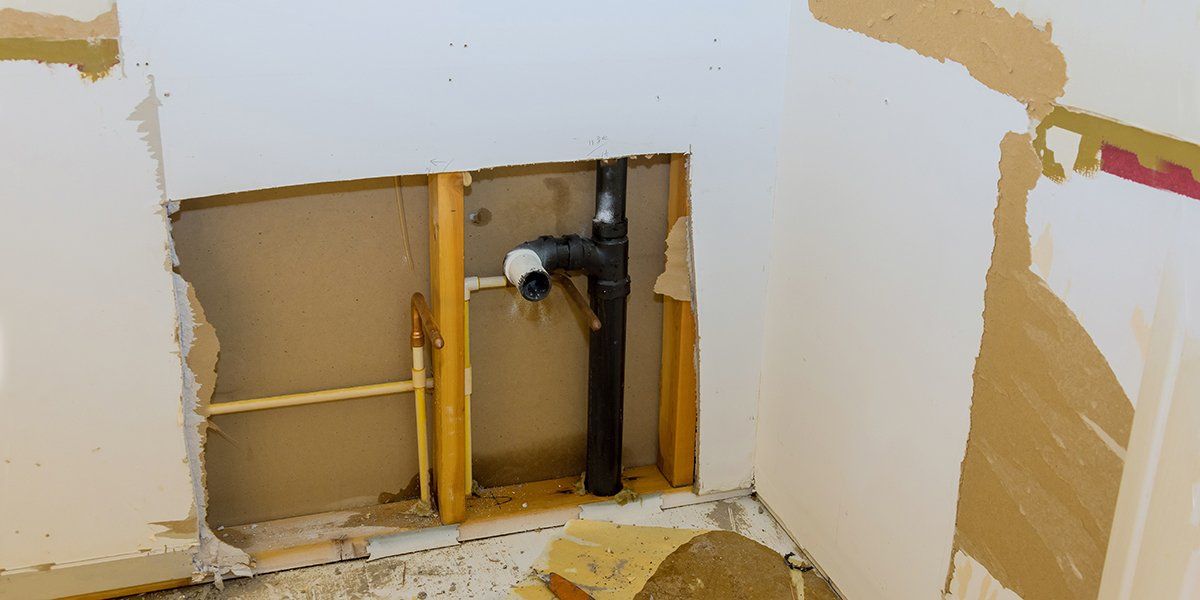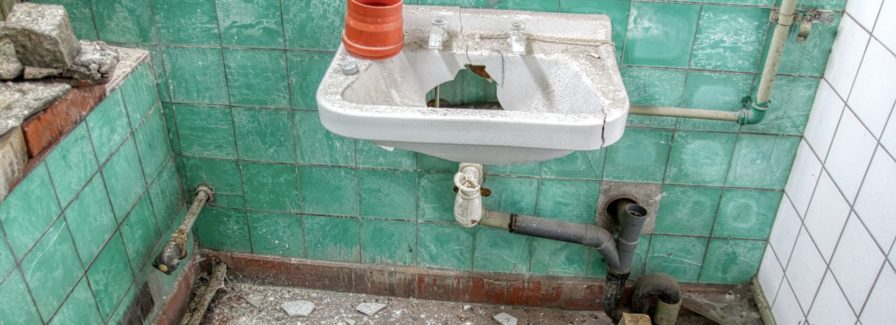Strategies for Handling Plumbing in Older Homes: Guidelines
Strategies for Handling Plumbing in Older Homes: Guidelines
Blog Article
Everyone has got their private piece of advice involving Main Plumbing Issues Found in Old Houses.

Older homes frequently feature appeal, personality, and background, however they can also bring a host of pipes concerns. Whether you're handling aging pipes, low water stress, or leakages, recognizing just how to deal with these usual issues is vital to preserving a safe and useful home. In this overview, we'll discover the common pipes difficulties encountered by older homes and give useful remedies to keep your plumbing in top shape.
Recognizing Usual Plumbing Concerns
Aging Pipelines
Among the most common problems in older homes is aging pipelines. Relying on the period in which your home was constructed, the pipelines could be made from materials that have deteriorated gradually, such as galvanized steel, cast iron, or perhaps lead. These materials can wear away, end up being fragile, or develop leakages, causing water damage and prospective health hazards.
Low Water Pressure
If you're experiencing low tide pressure, maybe because of natural resources, corrosion inside the pipes, or old fixtures that are no more functioning efficiently. This can be a significant hassle, particularly in locations like showers and sinks.
Dripping Pipes
Leaks are another regular concern in older homes, frequently triggered by rusty or worn-out pipelines. Also small leaks can lead to substantial water damage, mold and mildew growth, and boosted water expenses if not resolved quickly.
Out-of-date Fixtures
Out-of-date plumbing fixtures such as taps, bathrooms, and showerheads not only look old however might also be much less efficient, susceptible to leaks, or inappropriate with modern plumbing standards.
Pipeline Rust
Deterioration is a typical problem in older pipes, especially those made from galvanized steel or actors iron. Corroded pipes can restrict water circulation, create discoloration, and ultimately cause leakages or pipeline bursts.
Examining the Problem of Your Pipes
Evaluating Visible Pipelines
Begin by checking any type of visible pipes in your home, such as those in basements, crawl spaces, or under sinks. Look for signs of corrosion, leakages, or corrosion, which can suggest underlying concerns.
Looking for Leakages
Check for leaks by examining areas around taps, toilets, and under sinks. You can likewise check your water meter before and after a period of no water make use of to find hidden leaks.
Water Top Quality Screening
Older pipelines can influence the high quality of your water. Conduct a water high quality test to check for pollutants such as lead, rust, or other contaminations that might be presented by aging pipelines.
Solutions for Typical Plumbing Concerns
Changing Aging Pipes
If your home has old, deteriorating pipelines, think about replacing them with modern-day products like copper or PEX. This can be a significant financial investment, however it will protect against future concerns and enhance the safety and integrity of your plumbing system.
Dealing With Low Tide Pressure
To take care of low water stress, begin by cleansing or changing old fixtures and eliminating mineral buildup in the pipelines. If the problem lingers, it may be essential to replace areas of rusty pipes.
Fixing and Replacing Dripping Pipes
For little leaks, you can utilize pipe clamps or epoxy putty as a short-lived fix. Nonetheless, it's finest to change leaking pipelines entirely to prevent further damage.
Updating Fixtures
Updating old components to modern, water-efficient versions can improve your home's pipes efficiency and reduce water intake. Try to find components with the WaterSense tag for the very best efficiency.
Taking Care Of Pipe Rust
If your pipelines are corroded, changing them with corrosion-resistant products like copper, PVC, or PEX is the best option. Normal evaluations and water top quality upkeep can help stop further rust.
When to Call an Expert
While some pipes issues can be managed with do it yourself solutions, there are times when it's best to employ an expert. If you're taking care of major leaks, substantial deterioration, or are unclear about the condition of your pipes, an accredited plumber can offer skilled analysis and fixing.
Preventive Upkeep Tips
Regular Evaluations
On a regular basis evaluate your pipes system for indicators of wear and tear. Capturing issues early can prevent costly repair work down the line.
Water Pressure Guideline
Guarantee your water pressure is within the suggested variety to prevent worrying your pipes and fixtures. A plumbing technician can set up a pressure regulator if needed.
Water Quality Maintenance
Install water filters or softeners if your water top quality is poor. This can shield your pipelines and components from damages triggered by hard water or contaminants.
Proactive Pipeline Substitute
If your home has older pipes, consider proactive substitute prior to major problems arise. This can save you from emergency situation repair services and water damages.
Final thought
Handling pipes concerns in older homes needs a combination of vigilance, preventative upkeep, and timely upgrades. By understanding the usual obstacles and understanding when to seek professional aid, you can ensure your plumbing system remains useful and trustworthy for years ahead.
Common Plumbing Issues in Older Homes and How to Fix Them
Owning an older home in Australia comes with its unique charm and a set of challenges, especially when it comes to plumbing. The Sunshine Coast has many older properties that can harbour plumbing problems that aren t just inconvenient but potentially costly. Here s a look at some common plumbing issues in older homes and expert advice on how to handle them.
Outdated Piping Materials
Many older homes were built with galvanised steel, cast iron, or even lead pipes, materials that are far from ideal by today s standards. Galvanised pipes are prone to corrosion and clogging, while lead pipes pose serious health risks.
How to Fix:
Replacing old pipes is a job for a professional. Upgrading to copper or PVC piping not only enhances water quality and flow but also increases the property s safety and value. If you suspect your home has outdated materials, a licensed plumber can conduct a thorough inspection and recommend the best course of action.
Corrosion and Pipe Degradation
Over time, exposure to water and minerals can cause pipes to corrode, leading to leaks, bursts, and water contamination. Corrosion is especially common in homes over 50 years old.
How to Fix:
Regular inspections can catch early signs of corrosion. If corrosion is found, the affected section of piping often needs to be replaced. For homes with extensive corrosion, a complete plumbing overhaul might be necessary. It s crucial to consult with a plumbing expert to understand the extent of the issue.
Tree Root Intrusion
Older neighbourhoods usually have mature trees whose roots can intrude into pipe lines, causing blockages or damage. This is particularly problematic for sewer lines, where roots seek out water sources.
How to Fix:
A plumber can use a specialised camera to inspect sewer lines for root intrusion. If roots are a problem, methods like root cutting or hydro-jetting can clear the obstruction. In severe cases, part of the pipe may need replacing. Consider root barriers around the piping to prevent future issues.
Inadequate Water Pressure
Low water pressure in older homes can be due to various factors, including corroded water lines, sediment build-up in pipes, or outdated fixtures.
How to Fix:
First, check if the low pressure is isolated to one area or throughout the house. Replacing old fixtures can sometimes resolve the issue. However, if the problem is more widespread, it might be due to sediment or corrosion. Flushing the system or replacing the affected pipes usually restores normal pressure. Again, a professional assessment is advisable.
Outdated Fixtures
Older homes often feature fixtures that are not only visually dated but functionally inefficient. This includes everything from toilets and taps to showerheads and washing machine hoses.
How to Fix:
Updating these fixtures can improve both water efficiency and the aesthetic appeal of your home. Modern fixtures are designed to conserve water, which can significantly reduce your water bill and lessen your environmental impact.
Conclusion
Maintaining the plumbing in an older home requires a proactive approach. Regular checks and updates are key to preserving these beautiful properties. If you re facing plumbing issues in your older home, it s best to call on experienced professionals like Green & Gold Plumbing & Gas. With the right expertise, even the most daunting plumbing problems can be resolved, ensuring that your home s character is maintained while its functionality is enhanced.
https://gandgplumbing.com.au/common-plumbing-issues-in-older-homes-and-how-to-fix-them/

Do you really like reading up on Common Plumbing Challenges In Old Buildings? Try to leave a remark below. We'd be delighted to know your reactions about this content. Hoping that you come back again soon. Those who liked our blog posting if you please do not forget to pass it around. I cherish reading our article about Common Plumbing Problems in Older Homes.
Call Today Report this page